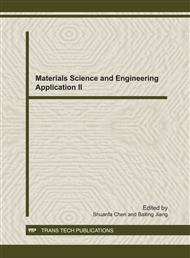p.95
p.103
p.109
p.117
p.122
p.129
p.133
p.138
p.144
Fuzzy Logic Modeling of Porous Carbon Body Fabrication from Cellulose Based Materials
Abstract:
This research presents a novel process for dry wood parts carbonization to net shape porous carbon body which retains all the wood’s anatomical feature. Due to reasonable price, easy shaping and good formability of wood, as a raw material, it can be used in several advanced cellulose-based applications without any special finishing steps. The interpretation of how carbonization parameters such as heat treatment temperature, carbonization time and initial density of wood affects the final solid carbon characteristics is a fundamental step in this technology improvement and is discussed in this study. A fuzzy logic (FL) method was implemented as a powerful and accurate way for predicting the bulk density change in special tree wood samples during carbonization process. Besides, a regression relationship is established between above parameters and subsequently, significance of each one was identified. Scanning electron microscope (SEM) was used to elucidate the porous carbon microstructure of final product.
Info:
Periodical:
Pages:
122-128
Citation:
Online since:
December 2011
Keywords:
Price:
Сopyright:
© 2012 Trans Tech Publications Ltd. All Rights Reserved
Share:
Citation:


